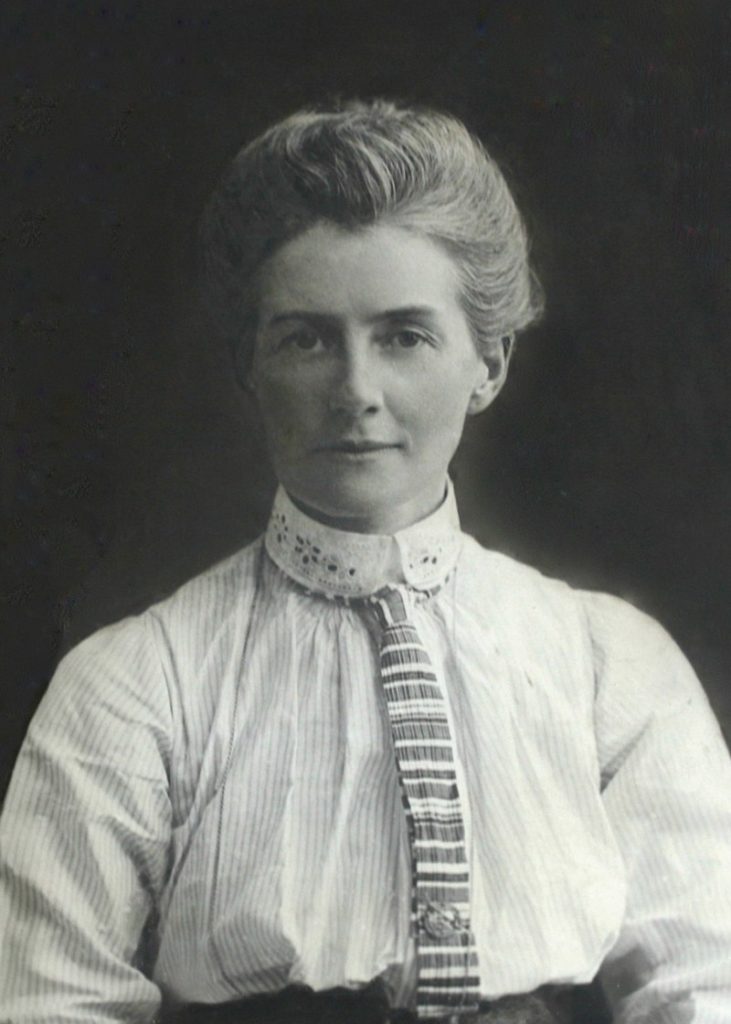Portrait: Edith Cavell
I grew up being told about Edith Cavell. According to family lore, she was my distant cousin. A British clergyman’s daughter born in Norfolk in 1865, she would become not only a nurse, but a symbol of humanity in the face of war. 3 August 2019 marks the 104th anniversary of her arrest in Brussels by German authorities, who charged her with aiding Allied soldiers and sentenced her to death by firing squad.
Her journey
Edith Cavell was the eldest daughter of the Reverend Frederick Cavell and his wife, Louisa. Even as a young girl, she was a talented artist and activist, extraordinarily raising the equivalent of nearly €40,000 for the local Sunday School by selling illustrated cards. Edith was educated at Norwich High School for Girls and various UK boarding schools, before a period as a governess, including in Brussels. But it was her return to England to look after her sick father that would eventually lead to a career in nursing.
After training in London Hospital, she worked in hospitals around the UK and as a private travelling nurse. Eleven years later she was recruited by Dr Antoine Depage (founder of the Belgian Red Cross) to L’École Belge d’Infirmières Diplômées and by 1910, she was to become the Matron for a new secular hospital in St Gilles. She felt nursing in Belgium was well enough developed at this time to merit the launch of the nursing journal, L’Infirmière. She went on to train nurses for three hospitals, 24 schools and thirteen nurseries in Belgium.
When the First World War broke out, Edith was back in the UK, visiting her widowed mother. She insisted on returning to Brussels where her clinic had been taken over by the Red Cross.

First World War
While the Red Cross treated soldiers of all nationalities, its nurses were not supposed to take part in the war on either side. However, after the Battle of Mons in August, British soldiers were left stranded and Edith heard stories of them being shot, alongside the locals who assisted them.
In the autumn of 1914, when two British soldiers found their way to Edith’s clinic, she harboured them for two weeks. Others followed. Gradually an underground network was established to allow the soldiers safe passage out of Belgium through the Netherlands, with the help of false papers from Prince Reginald de Croy and guides organised by the architect Philippe Baucq. The secret password for this nine-month operation was allegedly YORC – Croy backwards.
Edith hid her activity from colleagues in order to protect them but her initial outspokenness about the need to care for all, regardless of nationality, had drawn attention. By summer 1915, German police were closing in and intimidating Cavell, who had been deeply shaken by the death of her friend Marie Depage (Antoine’s wife) when the HMS Lusitania was sunk. She continued her clandestine work, although she knew now that her actions were punishable by death.
Arrest
Philippe Baucq was arrested on July 15 1915, and Edith’s arrest followed on August 3. She’d sewn her diary into a cushion and no evidence was found but she was betrayed by a man later convicted of collaboration by the French courts.
After 72 hours of interrogation, she was tricked into confessing when officers told her others had already revealed the whole story and she could save them by telling the truth. She believed this promise, although four of her fellow resistants were later sentenced to death.
Incarceration
Cavell spent 10 weeks in a spartan cell in St Gilles prison where she wrote letters to her family and to the nursing school on money matters. She requested just a few items, among them ‘blue and white combs from my drawer, a small notebook and hankies’. She reportedly told a Reverend, ‘Life for me has always been hurried and full of difficulty. These weeks in prison have been a time of rest. I have had time to read, to pray and to reflect.’
Diplomatic Efforts
The Germans were convinced that Cavell’s actions were belligerent and thus she had forfeited any protection for medical personnel under the 1906 Geneva Convention. While the British government claimed it could not assist Cavell and that any intervention would do more harm than good, the United States had not yet joined the war and did apply some diplomatic pressure.
The US First Secretary in Brussels put it to the Germans that executing Cavell would further damage their international reputation after the sinking of the Lusitania, which had caused revulsion in the civilized world.
Cavell’s humanitarian work resulted in a call for pardon by the German Civil Governor. But Count Harrach, (the man who had given Archduke Franz Ferdinand the car he was assassinated in), stated he’d prefer to see Cavell shot than see any more harm done to German soldiers and lamented that there were not ‘three or four old English women to shoot.’
To make matters worse, the Military Governor of Brussels, General von Sauberzweig, was supposedly bitter because his son had been blinded fighting the British. Sauberzweig ordered Cavell’s execution on 11 October 1915.
Death
At 8.30pm on the same day, Edith learned her fate from German Army Chaplain, Pastor Le Seur. She was visited in her cell by an Anglican chaplain, Sterling Gahan, who described her as clothed in her dressing gown and ready for the night. Together they took communion, and she told him, ‘Patriotism is not enough. I must have no hatred or bitterness towards anyone.’
Early the next morning, nurses wept and German soldiers bowed their heads as Edith Cavell was taken from the St Gilles prison with Philippe Baucq to the Tir National, where she was put before a firing squad of 16 men. Le Seur bound her eyes, which he said were filled with tears.
She had completed the last entry in her diary which read, ‘Died at 07h on 12th October 1915.’ She was 49.
Fall Out and Legacy
The Germans had worried that mercy towards Cavell would inspire other women, no longer fearful of retribution, to join the resistance. Cavell’s execution however proved a huge mistake. The US Embassy ensured the story was published in the press and there was international condemnation. Public opinion veered against the Germans and the Americans joined the war. Army recruitment in the UK doubled for the two months following news of the shooting.
Propaganda like this was against Cavell’s last wishes. On the evening before her death, Chaplain Gahan had told her, ‘We shall always remember you as a heroine and a martyr.’ Her response? ‘Don’t think of me like that. Think of me as a nurse who tried to do her duty.’
Later, Cavell would be awarded the Belgian Cross of the Order of Leopold and Croix Civique and France awarded her the Légion d’Honneur. She was exhumed from her burial place in St Gilles in 1919 and taken to England, where there was a procession of hundreds of nurses, soldiers, marching bands and civilians, and a service in Westminster Abbey attended by royalty and politicians.
Edith Cavell was finally laid to rest in Norwich, near her birthplace. As well as numerous memorials in Brussels, she is honoured all over the world, including a mountain in Canada.
Perhaps the last word should go to the German poet, Gottfried Benn, who was a senior German doctor in Brussels at the time. He wrote of Cavell’s execution: ‘I followed the trial from first to last and frequently spoke with her. I certified her death, closed her eyes, and placed her body in the coffin. She was the bravest woman I ever met.’
>> Read another portrait: Ingrid Daubechies <<



